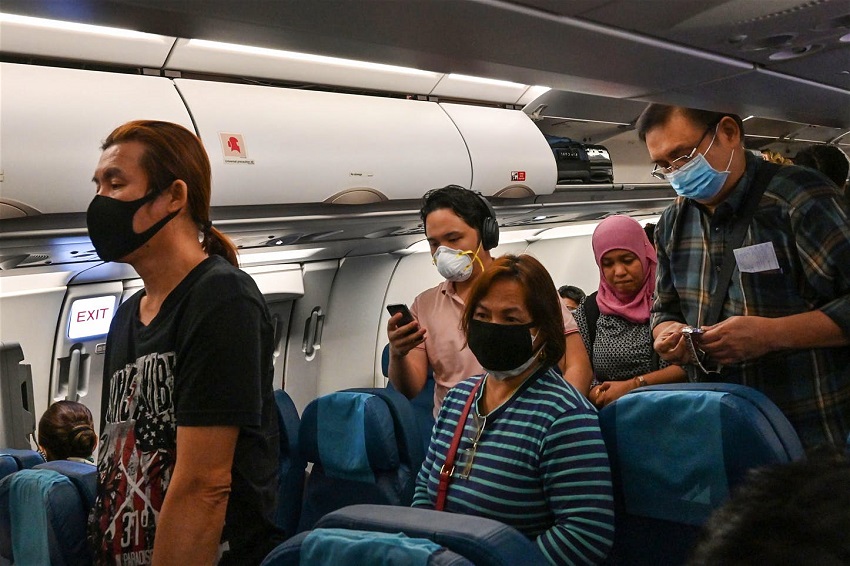Should I cancel my travel plans in light of the coronavirus outbreak?

By JOHN GARRY
The coronavirus outbreak has left people around the world wondering whether they should cancel or postpone pending travel plans. If you’re one of the many people feeling anxious about an upcoming trip, remember that while your decision to stay or go should always prioritize safety, you should remain up to date on the latest developments of COVID-19.
Here’s what travelers need to know in light of the current outbreak.
What is coronavirus?
Coronavirus disease 2019 (COVID-19) is a respiratory illness that spreads from person to person. Around 80% of people recover without requiring special treatment. The virus, which first appeared in Wuhan, China, has since spread to 38 countries. Of the roughly 82,000 reported cases, China accounts for 78,000. Older people and those with preexisting conditions – including high blood pressure, heart disease, and diabetes – are the most likely to develop a severe illness as a result of COVID-19.
According to the World Health Organization (WHO), there have been nearly 2,800 coronavirus-related deaths and nearly 28,000 recoveries as of February 26th. The fatality rate in Wuhan is between 2% and 4%, and 0.7% elsewhere – a statistic significantly lower than two other recent coronavirus epidemics. SARS, identified in 2003, has a fatality rate or 10%; MERS, identified in 2012, has a fatality rate of 35%.
Where should I avoid traveling?
Those with the highest risk of exposure to COVID-19 are people in China or those who have recently traveled there. Health care workers and close contacts of the sick have the highest risk of infection. People who’ve returned from China more than 14 days ago and are asymptomatic are not infected and cannot spread the virus.
To avoid infection, the Centers for Disease Control and Prevention (CDC) currently recommends forgoing all non-essential travel to China, the epicenter of the outbreak, and South Korea, where the affected areas offer limited access to proper medical care.
The CDC also recommends a high level of caution for travel to Italy, Iran, and Japan, where the outbreak has recently escalated. For travelers to these locations, checking advisories issued by each country is imperative. In Italy, for instance, 11 towns in the Lombardy region near Milan are under quarantine, and Venice’s cancellation of Carnival has turned the bustling city into a ghost town. However, nearby cities like Florence are still safe to visit, and most of the country has been unaffected by the outbreak.
Where can I find up-to-date travel information concerning COVID-19?
Regardless of location, it’s always wise for travelers to consult the websites of their intended destination for advisories and cancellations. The CDC regularly updates their site with health-related travel recommendations; the New York Times has an interactive map tracking the global spread of the outbreak. WHO is a treasure trove of information that offers regular updates on the status of COVID-19 cases around the world and answers questions for people concerned to travel during the outbreak.
Should I cancel my travel plans?
The trajectory of the outbreak is ever-changing, and for many, that may make the uncertainty of future travel difficult to plan. For those who’ve already booked trips to an affected area, check the cancellation policies for upcoming reservations. If there are cancellation windows to avoid payment penalties, mark them in your calendar and reassess the situation once it’s time.
Many airlines around the world are discontinuing flights to China, with US-based companies like United, Delta and American suspending travel to the region through the end of April. Be sure to check your airline’s policy concerning travel waivers and rebooking flights.
The CDC recommends travelers reconsider cruise ship voyages to or from Asian countries. If you’re planning a trip with Norwegian Cruise Lines, don’t worry – the company is canceling or rerouting all cruises to Asia through the summer season. For others, the Cruise Lines International Association, which accounts for 90% of all ocean-based boats, has enhanced screening measures for passengers and canceled or rerouted Asia-based excursions.
If you’ve yet to book travel for 2020, arm yourself with travel insurance. A “Cancel For Any Reason” (CFAR) travel insurance policy ensures travelers receive 50-75% of a trip’s prepaid costs in the event a cancellation isn’t covered under standard protections.
At the moment, any travel includes some risk of contracting COVID-19. While many countries have not yet reported COVID-19, that could change quickly, and high-traffic areas such as airports and train stations pose higher risks. Remember to wash your hands regularly with soap and warm water. But that’s just business as usual.
Mr. Garry is Lonely Planet Writer .Courtesy : Lonely Planet
Photo : Passengers on a plane wearing facemasks/ Romeo Gacad / Getty
Feb 28 , 2020














